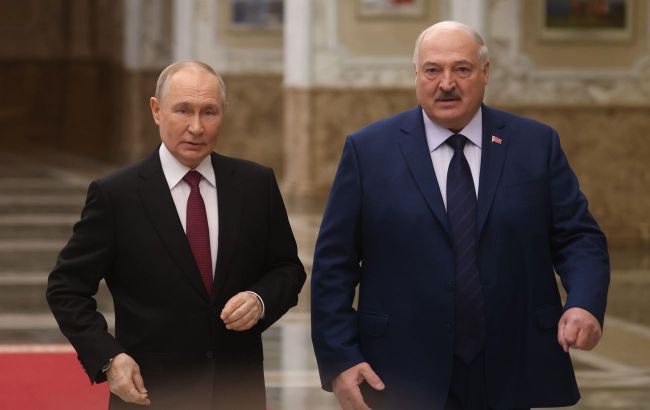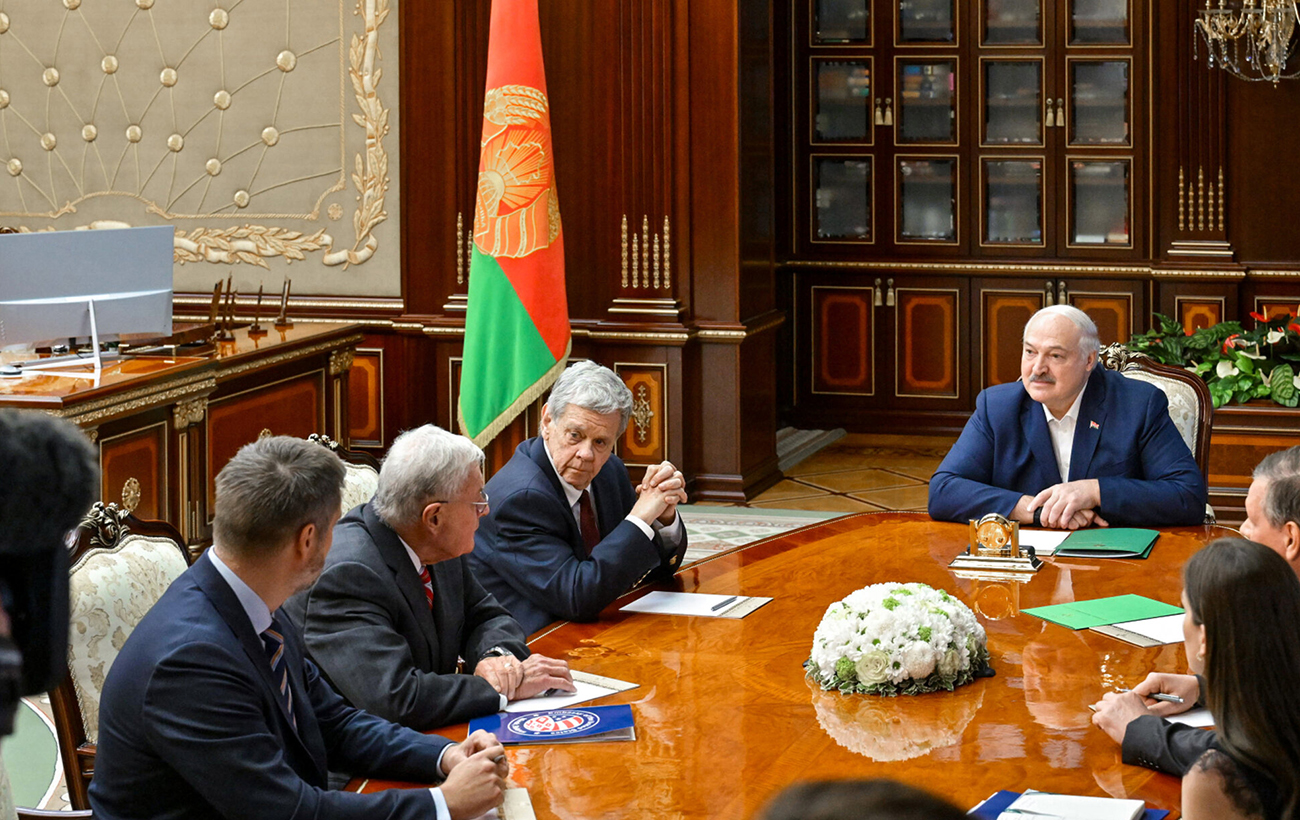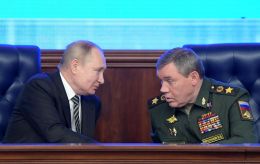Russian war games raise alarms: Will Zapad-2025 drills put Ukraine and Europe at risk?
 Vladimir Putin and Alexander Lukashenko (photo: Getty Images)
Vladimir Putin and Alexander Lukashenko (photo: Getty Images)
Read below about Russian-Belarusian Zapad 2025 military exercises, their purpose and threats, as well as the connection to the recent Russian attack on Poland and negotiations to end the war in Ukraine.
Key questions:
- What does Russia want to achieve during the Zapad 2025 exercises?
- How are the Kremlin's plans affected by limited resources?
- What is Lukashenko's strategy during the exercises and in his contacts with the US?
Today, September 12, the Zapad-2025 strategic command-post exercises begin as part of the Union State of Russia and Belarus. They are usually held during periods of heightened tensions with NATO.
For example, Zapad-1999 was held for the first time as Russia's response to the US and NATO military operation Allied Force against Yugoslavia in connection with the war in Kosovo. At that time, the exercises served as a warning to the Alliance not to interfere with Russia's actions in Chechnya.
Zapad 2009 took place after the 2008 Russian-Georgian war, and Moscow once again sent a warning to the West not to interfere in the post-Soviet space. During the 2013 exercises, Russia practiced preparations for aggression against Ukraine.
And on the eve of the full-scale invasion of Ukraine, during the Zapad 2021 exercises, Russia simulated a strategic offensive operation involving the breakthrough of Russian troops into the Kaliningrad region, followed by the occupation of the Baltic states and part of Poland. At the same time, they worked on repelling Ukraine's attempts, with the support of the US/NATO, to regain control over Crimea and further offensive operations against Ukraine.
Zapad 2025 exercises purpose
This year, the scenario for the exercises is primarily defensive in nature, with only a few elements of offensive action. According to the scenario, a hypothetical adversary carries out a series of provocations: sabotage, cyberattacks, and attempts to invade the territory of Belarus and the Kaliningrad region of Russia. This leads to a local conflict, and then Russia and Belarus conduct operations to localize, block, and destroy illegal armed formations.
The exercises also plan to practice the use of nuclear weapons and the Oreshnik missile system, but, of course, only with simulated launches.
"This sends a signal to the West, including regarding nuclear and hypersonic weapons, involving Belarus in this track, in particular as a continuation of the projection of Russian military and political power. It also creates a security and information curtain, maintaining tension," Yan Avsieiushkin, an analyst for the iSANS project, tells the agency.
These differences from previous years are related to both purely military and political issues. In particular, significantly fewer Russian troops arrived in Belarus compared to previous exercises—almost all combat-ready units are fighting against Ukraine.
In addition, the Trump factor plays a role. Incidents such as Russian drones in Poland did not elicit a noticeable reaction from the US President, but more systematic actions during the exercises are a completely different matter.
"This is a show of force to the US and NATO. But the Russians are afraid to strain relations with the West too much right now, because that could push Trump to impose additional sanctions. That is why the exercises are relatively small in scale. And they are far from the borders of Europe," retired colonel and former deputy director of the Information and Analytical Department of the Defense Intelligence of Ukraine Serhii Mishchenko (name changed at the request of the interviewee) tells RBC-Ukraine.
According to him, Moscow will not be able to accumulate enough forces to attack the Baltic states and Poland even in a few years if it stops the war against Ukraine. Russia is in the midst of an economic crisis, which limits its resources for rebuilding its armed forces.
 Zapad 2017 military exercises (photo: Getty Images)
Zapad 2017 military exercises (photo: Getty Images)
At the same time, NATO has been strengthening its defenses in this area since 2014. In 2020, US President Donald Trump and then-Polish President Andrzej Duda signed an agreement to change the principle of deploying US troops in Poland from rotational to permanent. Under the agreement, the number of US troops in Poland was increased to 5,500 soldiers and officers, and the creation of six American bases was agreed upon.
The Pentagon has also reinstated the US Army's 5th Corps. It had been stationed in Europe since World War II and was disbanded in 2013. The corps now includes two rotational divisions, a separate armored cavalry regiment (in fact, a mechanized brigade), an artillery brigade, and an army aviation brigade. The corps headquarters is located in Poland. One of the divisions is on Polish territory, the other is in Romania, and the brigades are located in Germany. To this should be added the armed forces of the countries of the region themselves and NATO's multinational Northeast Corps.
"In total, the number of troops in Poland and the Baltic states is equivalent to seven Russian armies. To fight them, Russia would have to deploy two to three times more forces in the first echelon alone," Mishchenko emphasizes.
Against the backdrop of the start of the Zapad 2025 exercises, Poland is pulling about 40,000 of its troops to the Belarusian border. Of course, after the incident with the Russian Shahed drones, when the allies were only able to shoot down 4 drones collectively, doubts may arise about the combat readiness of NATO forces. However, in the current conditions, they still have the potential to deter Russia.
Lukashenko's game
Surprisingly, one of the few who can benefit from this situation is Belarusian dictator Alexander Lukashenko.
"Now, against the backdrop of attempts and efforts to somehow establish contacts with the West, it is precisely Russia's inability to send more troops that Minsk is using to create an image of a constructive, predictable partner or counterparty with whom it is possible to negotiate," Yan Avsieiushkin tells the agency.
In recent months, US Special Envoys Keith Kellogg and John Cole have visited Belarus. During their visits, Lukashenko twice released political prisoners – 66 people in total. In return, on September 11, the US lifted sanctions on the Belarusian state-owned company Belavia.
"This (lifting of sanctions – ed.) is fully in line with the negotiation process between the US and official Minsk. This does not mean that there has been a complete turnaround and strategic détente in relations. But such steps create some space for tactical shifts for official Minsk," Avsieiushkin says.
 Keith Kellogg and Alexander Lukashenko (photo: Getty Images)
Keith Kellogg and Alexander Lukashenko (photo: Getty Images)
At the same time, this rapprochement is taking place with Russia's knowledge. On the eve of Kellogg's visit, during which the first 14 political prisoners were released, the head of the Investigative Committee of Russia, Alexander Bastrykin, arrived in Minsk from Moscow.
"This indicates a certain coordination between Moscow and Minsk in this process. If we talk about the degree of Lukashenko's autonomy, it is obvious that it has significantly decreased in recent years. It would be wrong to say that he is completely subordinate to Moscow. It would also be wrong to say that he is completely independent," the expert stresses.
In general, it is beneficial for Russia to keep Belarus independent as a kind of forward base in the west, through which it can demonstrate its power if necessary. On the other hand, it does not need additional protection, as it is not formally involved in the war against Ukraine.
Peace talks context
The realities on the ground regarding Poland and Belarus overlap with the political processes between the US and Russia within the framework of peace talks. Currently, they have reached an impasse, and Putin continues to feign a desire for peace and gradually undermines NATO unity.
As the case with Poland shows, Donald Trump is still willing to tolerate such actions, the reasons for which are not entirely clear. For example, he reacted peculiarly to the incident with the Shahed drones in Poland, giving rise to very different interpretations of his position.
"What's with Russia violating Poland's airspace with drones? Here we go!" the US President wrote on the social network Truth Social.
The reaction of other NATO members gives more reason for optimism. At the initiative of the United Kingdom, the strengthening of air defense over Poland with the participation of European members of the Alliance is being considered.
"Russia's actions are, in one way or another, pushing NATO towards greater unity and a tougher stance on Russia. And even towards greater assistance to Ukraine, particularly in the field of air defense," Mishchenko believes.
Poland also understands the connection between Russia's war against Ukraine and the drone attack on Poland, Lukasz Adamski, deputy director of the Mieroszewski Center and a Polish expert on international affairs, told RBC-Ukraine.
"All reasonable politicians and experts understand that Russia's provocations must be met with a strong response, otherwise it will continue. The question is what political and military instruments to use to ensure that the response is painful for the Russian regime, but at the same time does not increase the risk of Poland's direct involvement in the war. The need for further assistance to Ukraine in its defensive war against Russia is also understood," Adamski notes.
The best response to Russia's actions now should be a new level of cooperation between Ukraine and the Alliance. For example, the synchronization of air defense systems so that NATO forces can shoot down Russian drones and missiles while they are still over Ukrainian territory.
As for the Zapad 2025 exercises themselves, the information component will be no less important than the rehearsal of joint actions by Russia and its satellites. "There will be disinformation coming from all sides, 90% of it Russian, 10% unfortunately from others. Hysteria will be whipped up," says Kyrylo Budanov, head of the Defense Intelligence of Ukraine, in early September, commenting on the upcoming Russian-Belarusian exercises. So, over the next few days, the Russians will open another line of information warfare, primarily on social media.

